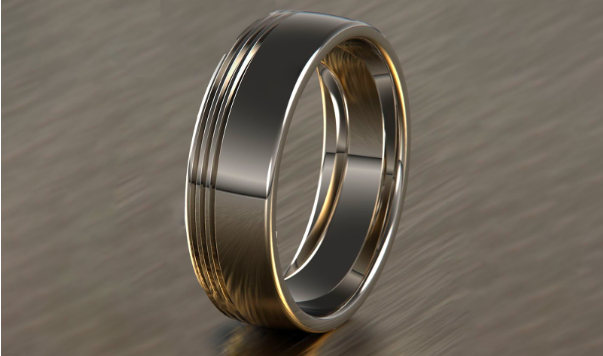Why do people really wear Wedding Rings?
Wedding rings have been a main feature of weddings and a symbol of marriage and commitment for centuries. But what do we know about this tradition?
Weddings rings are a well-established tradition and are seen to symbolise the everlasting love that married couples have for one another. The tradition of wearing wedding rings is one which is now shared by many different cultures and countries throughout the world. But, what is the meaning of the wedding ring and where is it believed to have originated?
What do Wedding Rings Symbolise?
The symbolism of wedding rings varies tremendously depending on the culture in question.
For example, within Christianity, a ring was incorporated into marriage ceremonies in 860, and eventually given spiritual significance around the 13th Century. A wedding ring within Christianity is therefore regarded as representing unity.
Within Christianity and Judaism, wedding rings are given as a symbol of love from the future husband to his bride-to-be.
The wide acceptance of both the bride and the groom receiving a ring as part of the marriage ceremony is a more recent development. This is the case in other countries too, as, during the Second World War, many men began wearing rings to serve as a reminder of their wives at home. This was gradually adopted by the general public, and the exchanging of rings that we know today as part of a wedding ceremony became commonplace.
How far do Wedding Rings date back?
It is believed, based on scrolls that were found and dated more than 3,000 years ago, that wedding rings were first worn in Ancient Egyptian times.
The scrolls described couples wearing rings made out of plants that were readily available, such as hemp and reeds. However, these rings were not durable, so they were soon substituted for leather, bone or ivory. The more expensive the given material, the wealthier the giver of the ring was deemed to be.
The traditional metal wedding band is thought to have originated in Ancient Rome, as the wedding ring tradition was adopted in Roman culture as a symbol of strength. The wedding rings made at this point in time were therefore typically made of iron, a stronger and more durable material, and were presented to the bride only, as they were seen to symbolise ownership.
It is also believed that wearing a wedding ring on the left hand, on the finger next to your little finger, now referred to in some cultures as the ‘ring' finger, derived from Ancient Rome. This is because they were thought to have seen this particular finger as including a ‘vein of love', which was connected directly to the heart.
It is worth noting, however, that in certain other cultures, including many countries within Europe, the ring is worn on a finger on the right hand instead or on a thumb.
The Circle's Symbolism
Whilst the location of the wedding ring differs across cultures, the symbolism of the circle of a wedding band is sometimes which seems far more universal.
Circles have no beginning and no end, so they are considered to be a symbol of eternity and commitment within a marriage. This was the case back in Ancient Egyptian times too, with the hole in the middle of the ring symbolising a gateway to the future. The significance of the circle is still viewed in the same way today, with wedding rings, therefore, representing infinite love and a shared future as a couple.
The Significance of the Diamond
Diamonds are widely seen to represent eternity, due to their strength and endurance. This makes them an ideal choice for wedding rings, as it complements the traditional significance of their circular shape and the symbolism of the wedding ring itself.
Whether you'd like to discuss wedding rings, engagement rings or another piece of fine jewellery, please contact Diamond Heaven today. Alternatively, if you'd prefer a more personal approach, please visit our Birmingham, London, Manchester, Glasgow or Cardiff stores, where an experienced member of our team will be able to advise you on the most suitable options for a wedding ring that is sure to be eternally admired.






 What is the Difference Between a Classic and Vintage Wedding Ring?
What is the Difference Between a Classic and Vintage Wedding Ring? Two Tone Or Carved Wedding Rings? Which Type Of Wedding Ring Is Best For You?
Two Tone Or Carved Wedding Rings? Which Type Of Wedding Ring Is Best For You? What is the Meaning of Rings on Fingers?
What is the Meaning of Rings on Fingers?